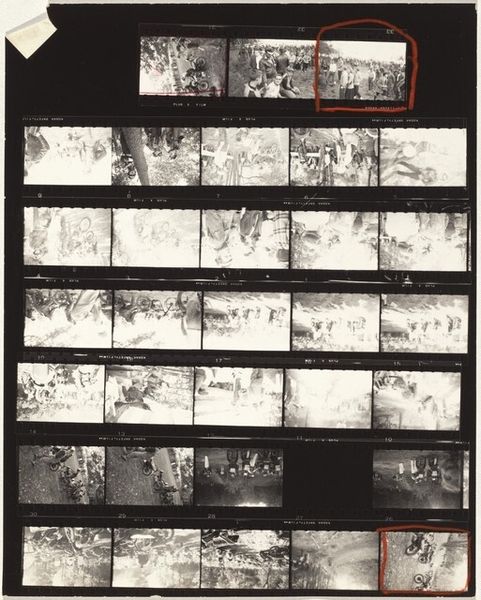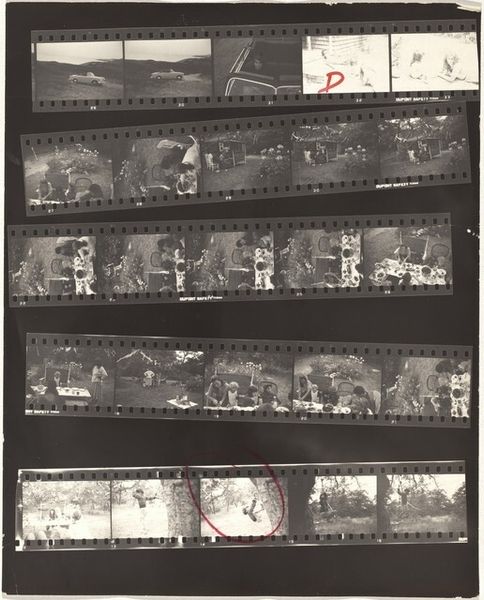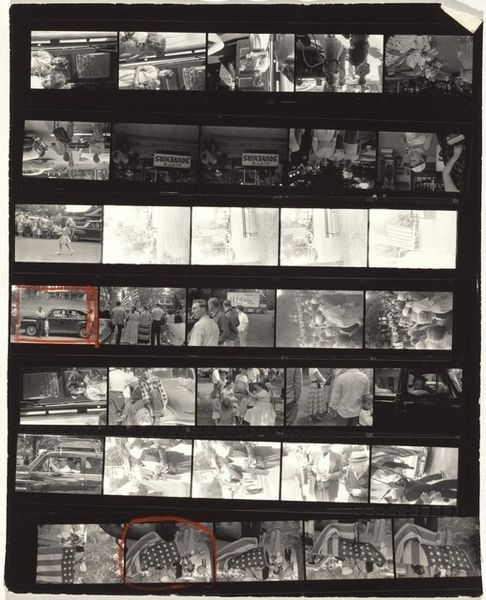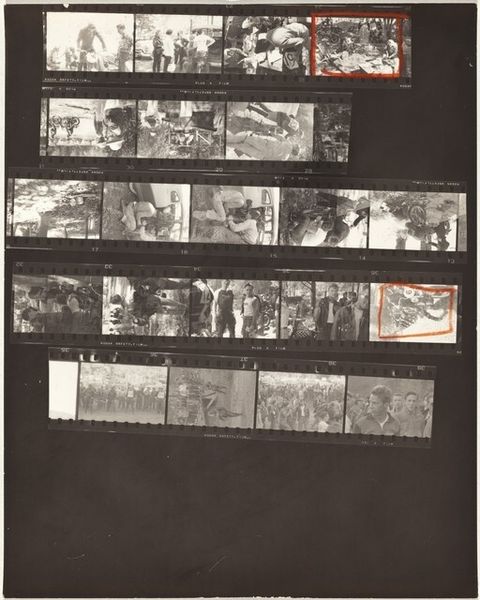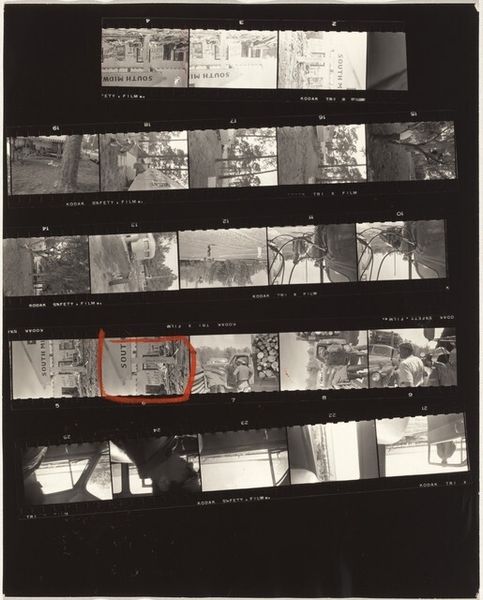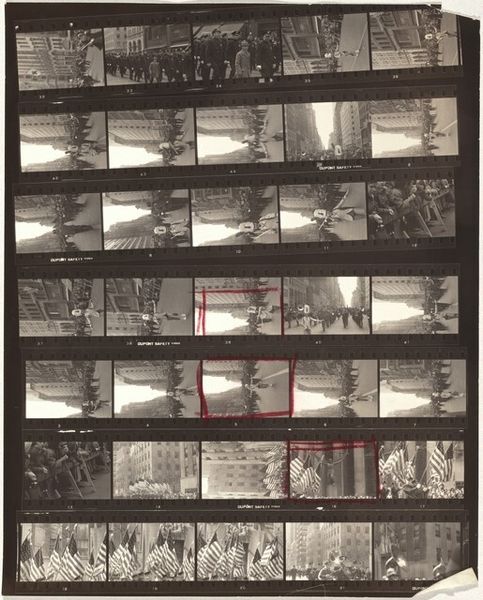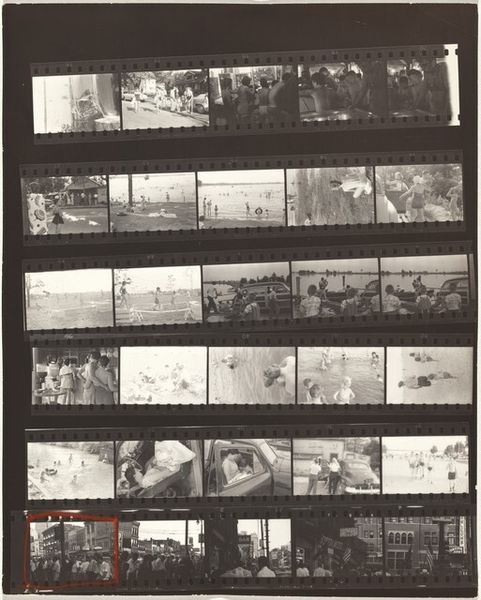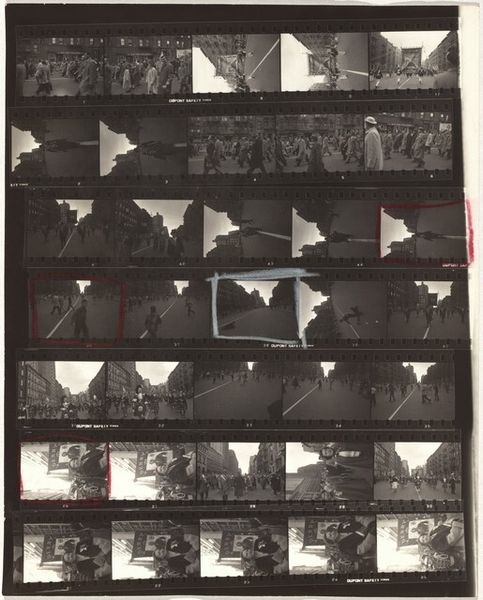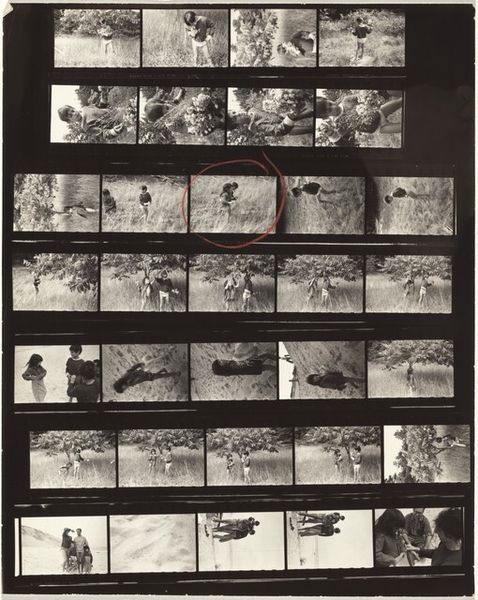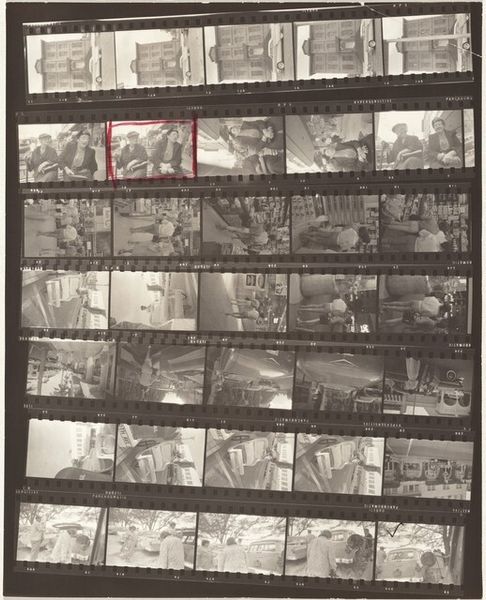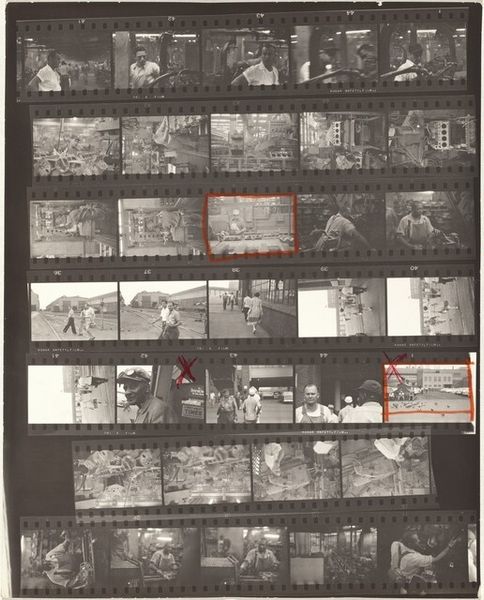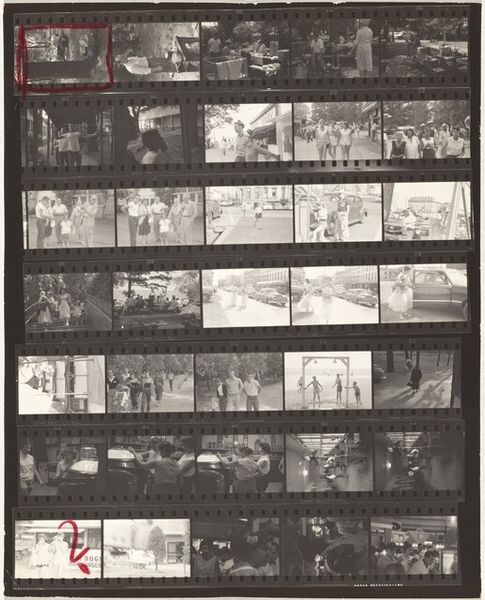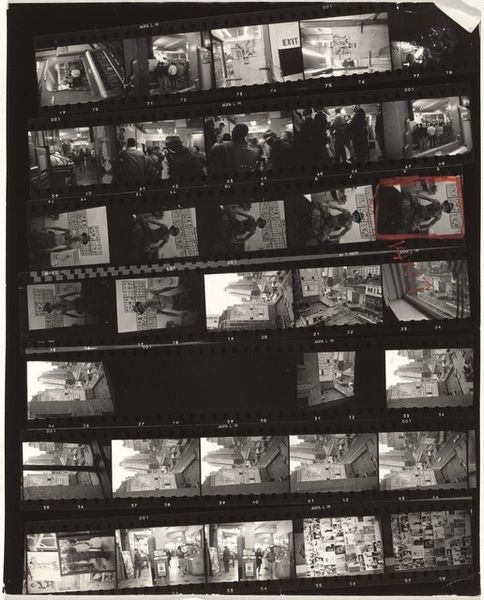
Dimensions: overall: 25.3 x 20.5 cm (9 15/16 x 8 1/16 in.)
Copyright: National Gallery of Art: CC0 1.0
Editor: So, this is Robert Frank's "Guggenheim 576—near Los Gatos, California" from 1956. It's a contact sheet from his time as a Guggenheim fellow, all those little glimpses captured in film. The red marks indicating chosen frames really jump out at me. It feels very raw, unfinished, like we’re seeing the artist's selection process. What do you see in this piece? Curator: Well, the contact sheet itself functions as a kind of unintentional window into Frank's editorial decisions during a pivotal moment in American photography. The Guggenheim Fellowship was crucial to his project of documenting America. The selection and rejection become politically charged choices about representation. Editor: Politically charged? How so? Curator: In the context of the 1950s, documentary photography carried a lot of weight. Frank was a Swiss immigrant, an outsider, and he wasn't necessarily reinforcing the established, idealized image of the American Dream. His choices of which images to discard and keep show a clear intention to show a different America. Why do you think Frank chose photography over other forms of documentation? Editor: Photography’s supposed to be objective, right? Maybe he wanted to subvert that objectivity. But a contact sheet shows so much more than a single photo can. Curator: Precisely. And the presentation matters! This isn't a glossy print; it's a work print, offering a peek behind the curtain, showing how a vision of America was actively constructed, and in a way that implicated himself in the act of observation. He questions the presumed objectivity that photos are known to bring, almost as if hinting that seeing is itself a subjective act. Editor: That's fascinating, framing the artist's choices themselves as a political statement. I hadn't thought about how even the selection process could carry so much weight. Curator: Seeing the photographer in his political and cultural context can allow new ways of relating with the imagery they captured, for instance, by understanding the institutions framing art.
Comments
No comments
Be the first to comment and join the conversation on the ultimate creative platform.

